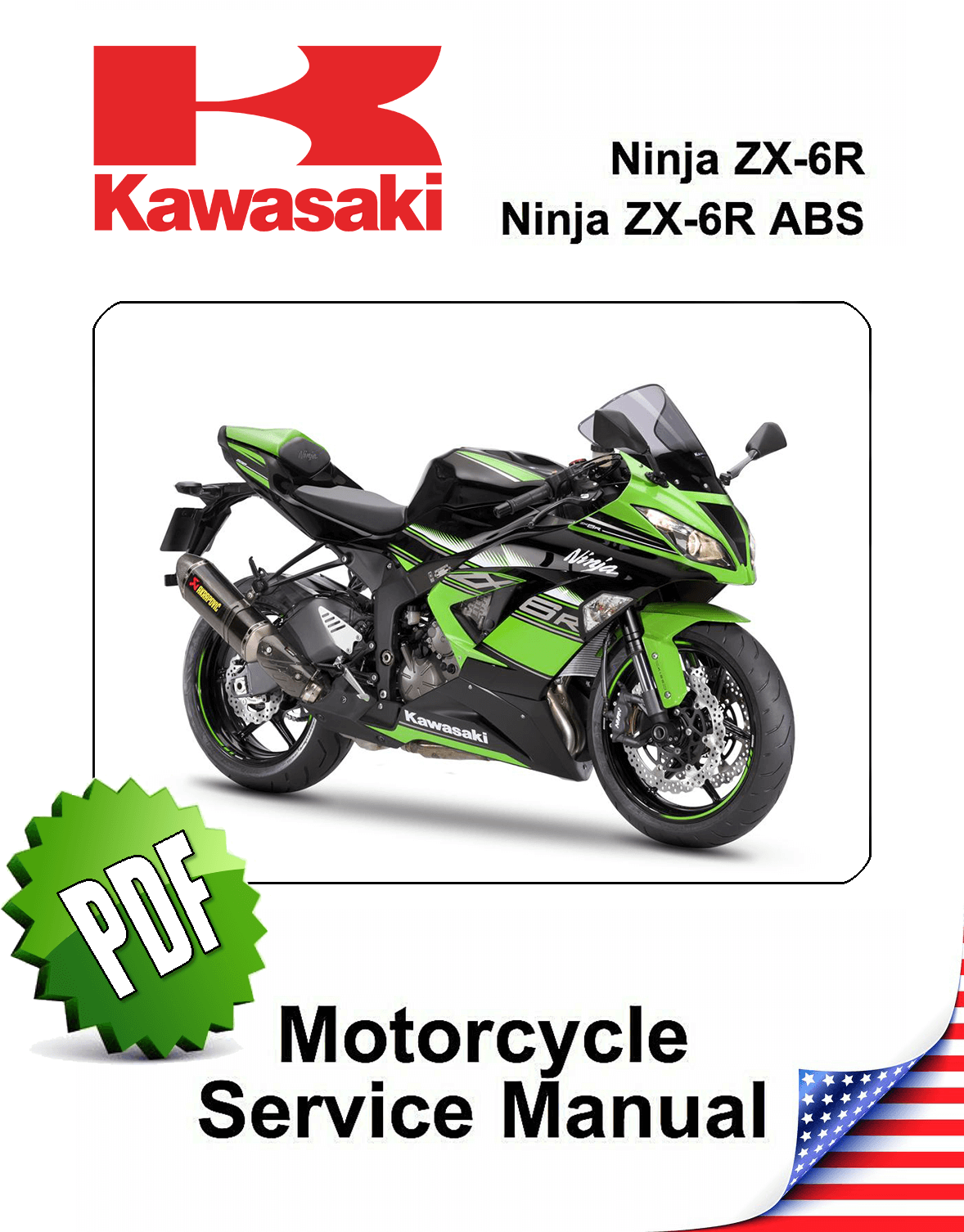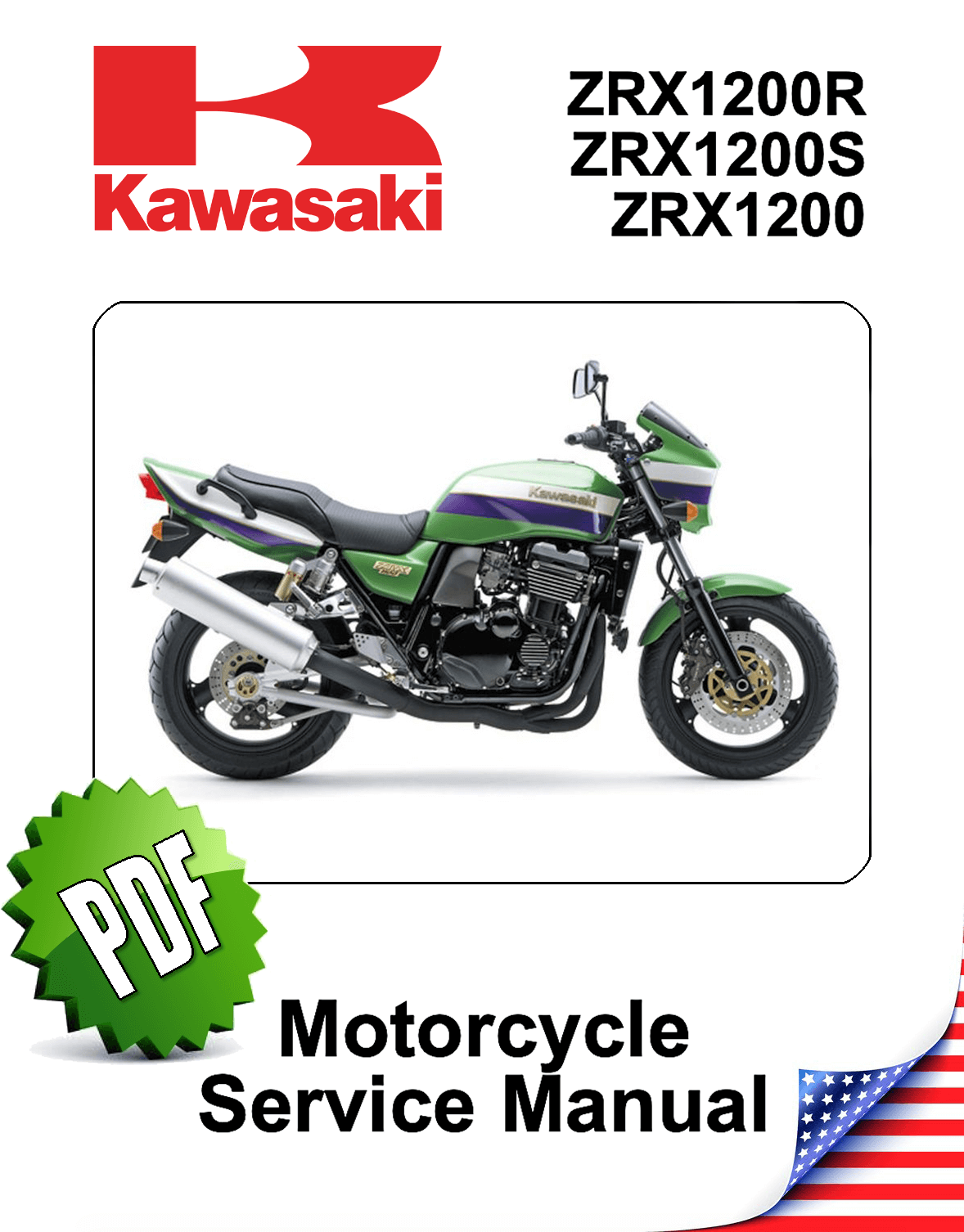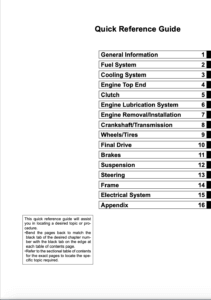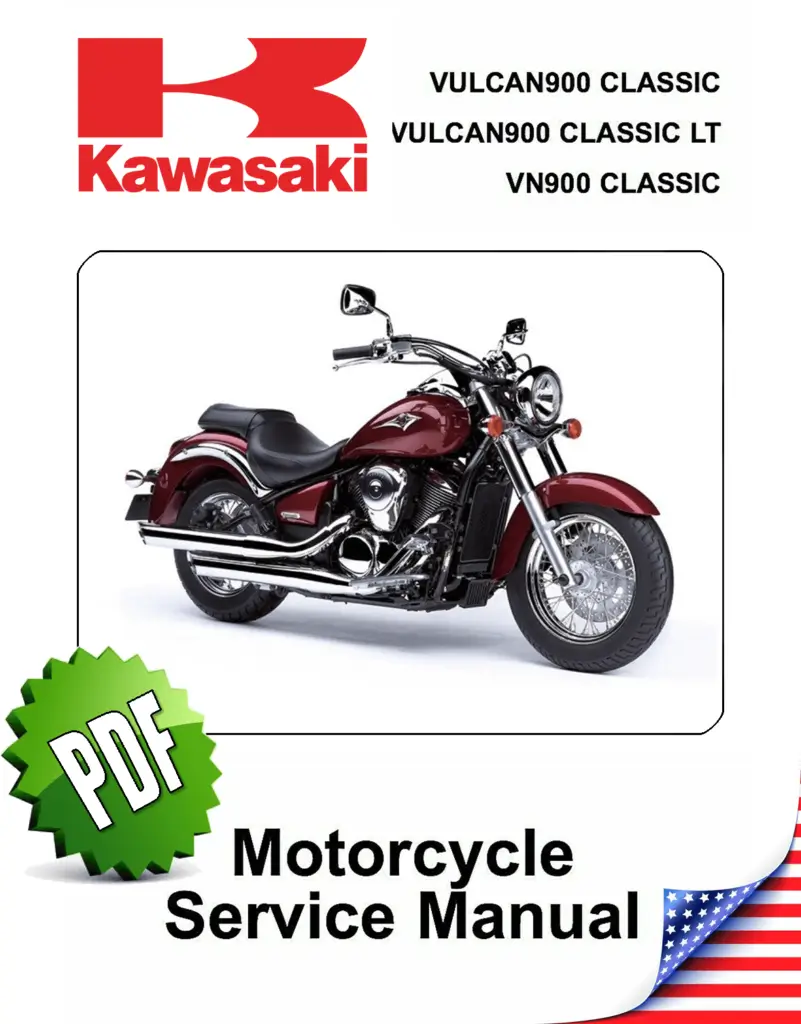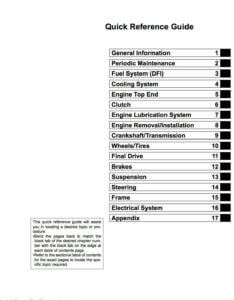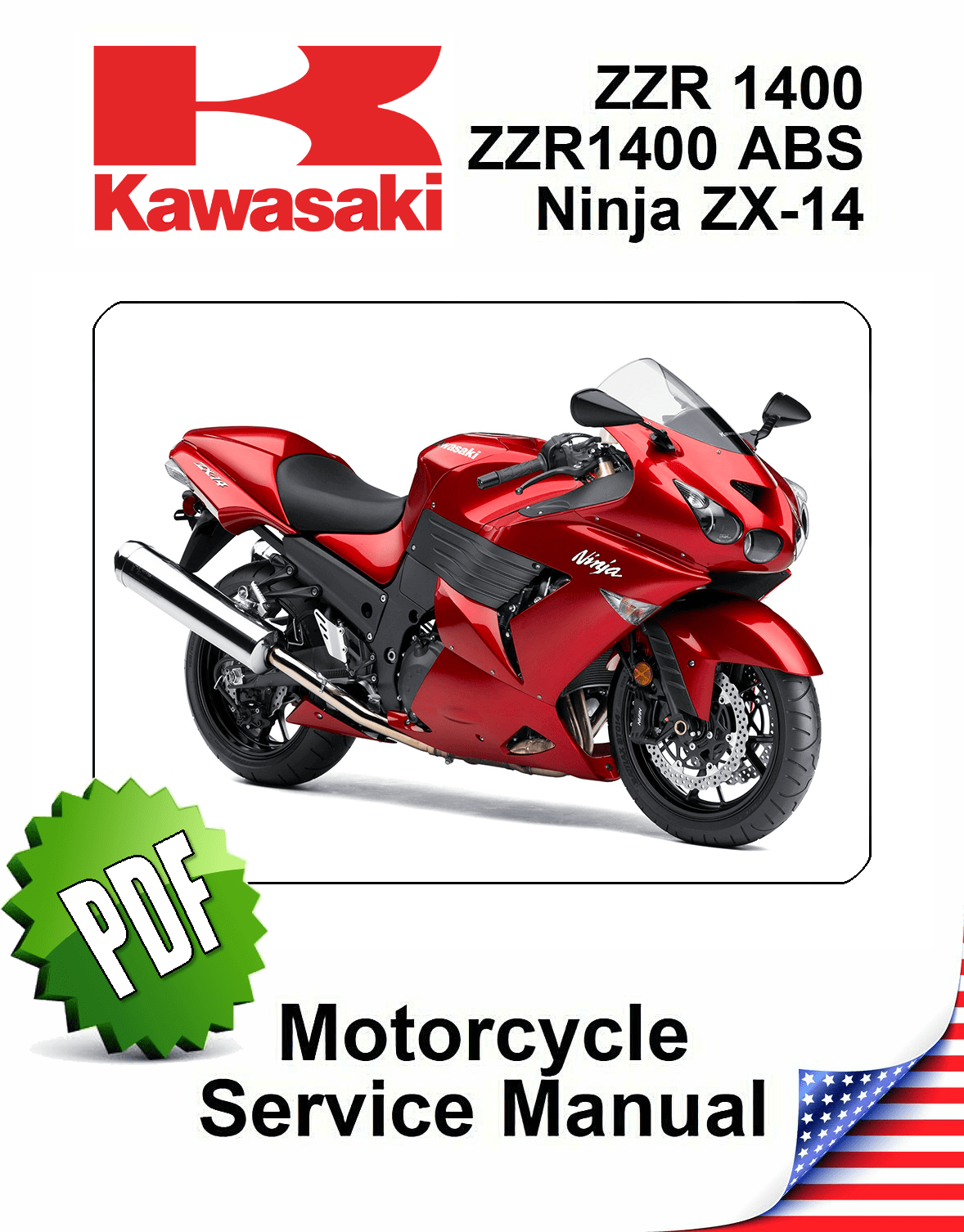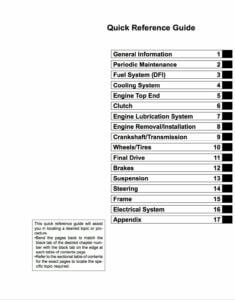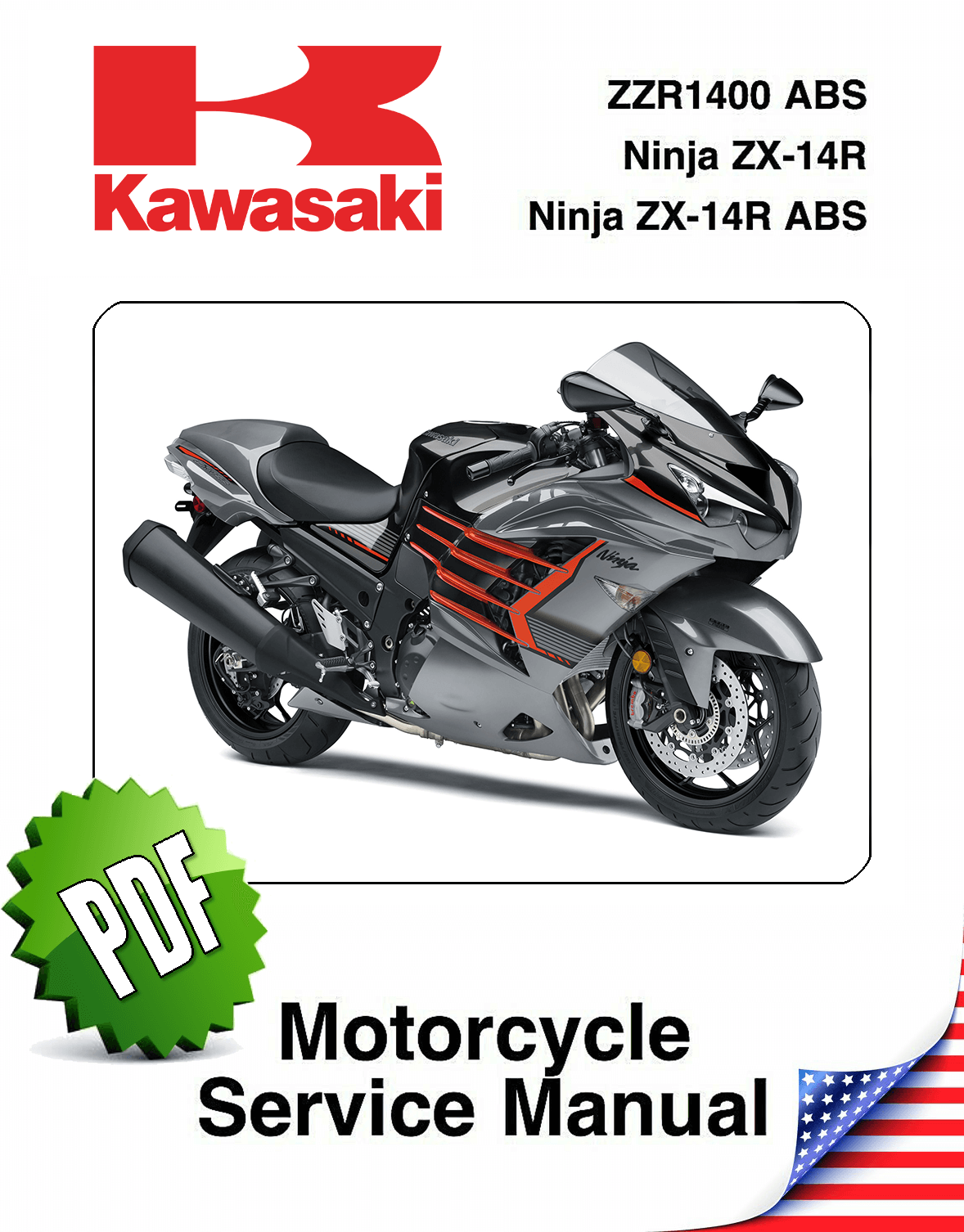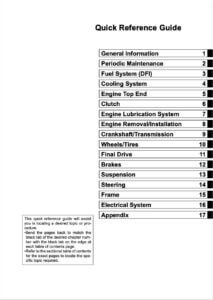Complete PDF version of the Service Manual for the Kawasaki Ninja ZX6R. A MUST for every ZX6R owner.
Download: Immediately after payment!
OEM Original factory workshop manual.
Models covered by this manual: 2013 to 2018
Number of pages: 732 pages
Table of contents:
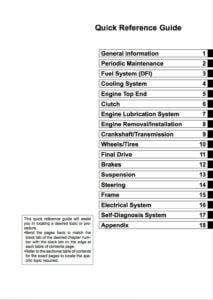
This PDF repair manual can be downloaded right after the payment process in complete, on the device of your choice.
We do not offer printed manuals, for the following reasons:
- it is more eco-friendly to use a digital version
- your manual never gets dirty or greasy
- you can always choose to print the specific page(s) you need to work on your bike
- you receive your manual immediately after payment
- it is searchable

Kawasaki Ninja ZX6R
The Kawasaki Ninja ZX-6R is a 600cc class motorbike in Kawasaki‘s Ninja sport bike series. It was first presented in 1995 and has since been regularly upgraded in response to new models from Honda, Suzuki, and Yamaha. In the 1980s, the ZX series was known as the Ninja line of Kawasaki bikes, and it still bears that moniker today.
Kawasaki released the ZX-6R in 1995, with very similar appearance and characteristics to the ZX-9R introduced in 1994, including the ram-air intake that Kawasaki had developed since the 1990 ZX-11 (ZZ-R1100). The original ZX-6R weighed 401.2 lb (182.0 kg) dry, 454 lb (206 kg wet), and could accelerate from 0 to 60 mph (0 to 97 km/h) in 3.6 seconds.
Kawasaki resurrected the ZX-6R 636 in 2013, while still selling the conventional, 599 cc 2009-2012 ZX-6R at a reduced price.
The 2013 ZX-6R 636 is a brand-new motorcycle. The engine capacity has been raised to 636 cc, with two fuel maps selectable through a button on the handlebars. The new version boasts more torque and horsepower, and the improved performance is noticeable at lower RPMs. While the tail is similar to that of the 2009-2012 model, it has new front and side fairings, a new dash, a new frame, a new Showa BPF-SFF front suspension, Kawasaki Traction Control (KTRC) with three modes (sport, city, and rain) as standard equipment, and a Kawasaki Intelligent anti-lock Brake System (KIBS) as an option.
The left leg bar of Showa’s Big Piston Fork – Separate Function Fork (BPF-SFF) suspension has a larger and stronger spring than the right, with controlled pre-load. The oil damper part on the right bar is larger, with adjustable rebound and compression damping. According to the manufacturer, this asymmetric design reduces friction inside the fork, results in substantial mass loss, and delivers a more user-friendly suspension response. On all three traction control modes, the KTRC system manipulates the ignition timing, while mode 3 (rain mode) additionally employs a separate throttle operated by the on-board electronics to allow for faster reaction to wheel over-spin on slick surfaces. When the throttle is closed, traction control and power modes can be modified or turned off, even while riding the bike. Customers’ concerns about the OEM steering damper on prior versions persuaded Kawasaki to omit this feature on future models.
The 2019 ZX-6R 636 receives the following updates: Euro4 compliance, KQS quickshifter (up only), redesigned bodywork and seat, LED headlights, and an upgraded dashboard. The advertised horsepower has also been reduced from 96.4 kW (129.3 hp) in the 2018 model to 94.9 kW (127.3 hp).
Source: Wikipedia

